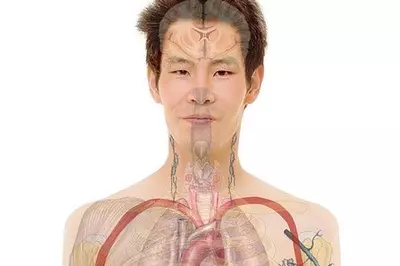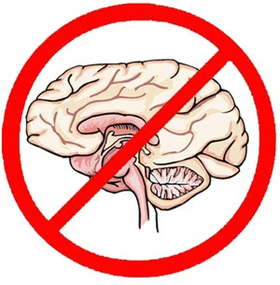What Is the Mind-Body Connection?

 Well-educated, slender, and attractive, Julie seems to have it all. She has a PhD, an interesting career, and good friends. So everything's great, right?
Well-educated, slender, and attractive, Julie seems to have it all. She has a PhD, an interesting career, and good friends. So everything's great, right?
Not exactly. Julie also has diabetes. And while she loves her job, she feels anxious about running a business. She often gets angry at herself, and snaps at others for small mistakes. Even scarier, despite careful monitoring of her blood sugar, she finds herself in a coma once or twice a month. What's going on?
It turns out that despite Julie generally healthy habits, her anxiety prevents her from paying attention to the cues her body gives her when her blood sugar is too low.
On her doctor's advice, Julie tries Mindfulness Based Stress-Reduction (MBSR) classes along with her regular diabetes care program. The MBSR practices help Sylvia slow down and actually pay attention to her body.
Julie begins to notice when her blood sugar is dropping, so she can eat to prevent herself from going into a diabetic coma. She also finds it easier to control her diabetes with insulin, probably because reducing her anxiety helps reduce her stress hormones. Her anger, a product of her stress, also fades away.
What is the mind-body connection?
Julie's story is a great example of what we call the mind-body connection. This means that our thoughts, feelings, beliefs, and attitudes can positively or negatively affect our biological functioning. In other words, our minds can affect how healthy our bodies are!
On the other hand, what we do with our physical body (what we eat, how much we exercise, even our posture) can impact our mental state (again positively or negatively). This results in a complex interrelationship between our minds and bodies.
"the brain and peripheral nervous system, the endocrine and immune systems, and indeed, all the organs of our body and all the emotional responses we have, share a common chemical language and are constantly communicating with one another."
What are body-mind therapies?
Related to mind-body therapies are therapies that use the body to affect the mind, such as yoga, tai chi, qigong, and some types of dance (these are sometimes called body-mind therapies). Ultimately mind-body and body-mind therapies are interrelated: the body affects the mind, which in turn impacts the body (and the mind.)
 Patient support groups
Patient support groups- Cognitive-behavioral therapy
- Meditation
- Prayer
- Creative arts therapies (art, music, or dance)
- Yoga
- Biofeedback
- Tai chi
- Qigong
- Relaxation
- Hypnosis
- Guided imagery
What exactly is meant by the word "mind?"
 It's important to note that "mind" is not synonymous with brain. Instead, in our definition, the mind consists of mental states such as thoughts, emotions, beliefs, attitudes, and images. The brain is the hardware that allows us to experience these mental states.
It's important to note that "mind" is not synonymous with brain. Instead, in our definition, the mind consists of mental states such as thoughts, emotions, beliefs, attitudes, and images. The brain is the hardware that allows us to experience these mental states.
Mental states can be fully conscious or unconscious. We can have emotional reactions to situations without being aware of why we are reacting. Each mental state has a physiology associated with it—a positive or negative effect felt in the physical body. For example, the mental state of anxiety causes you to produce stress hormones.
Many mind-body therapies focus on becoming more conscious of mental states and using this increased awareness to guide our mental states in a better, less destructive direction.
What is the history of mind-body connection?
Awareness of the mind-body connection is by no means new. Until approximately 300 years ago, virtually every system of medicine throughout the world treated the mind and body as a whole. But during the 17th century, the Western world started to see the mind and body as two distinct entities. In this view, the body was kind of like a machine, complete with replaceable, independent parts, with no connection whatsoever to the mind.
This Western viewpoint had definite benefits, acting as the foundation for advances in surgery, trauma care, pharmaceuticals, and other areas of allopathic medicine. However, it also greatly reduced scientific inquiry into humans' emotional and spiritual life, and downplayed their innate ability to heal.
In the 20th century, this view gradually started to change. Researchers began to study the mind-body connection and scientifically demonstrate complex links between the body and mind. Integrative psychiatrist James Lake, MD, of Stanford University, writes that "extensive research has confirmed the medical and mental benefits of meditation, mindfulness training, yoga, and other mind-body practices."

Shift your emotions exercise
Practice shifting from negative emotions to a more positive emotional state by listening to this guided audio exercise.
Shift Your Emotions Exercise
 Positive feeling states are associated with healthier bodies, improved thinking, and enhanced decision-making capabilities. Intentionally invoking a positive feeling can enhance our ability to function in our lives.
Positive feeling states are associated with healthier bodies, improved thinking, and enhanced decision-making capabilities. Intentionally invoking a positive feeling can enhance our ability to function in our lives.
How do you shift to a more positive state? It involves re-experiencing a positive emotional state and feeling it in your body (not just visualizing or talking about it). In less than a minute, you can shift an emotion, change your physiology, and become more effective and happier.
Practice shifting from negative emotions to a more positive emotional state by listening to this guided audio exercise. (If you prefer, you can download the MP3 file to play in a relaxing environment. You will need to unzip this file once downloaded.)
Download the Shifting Emotions Exercise PDF


